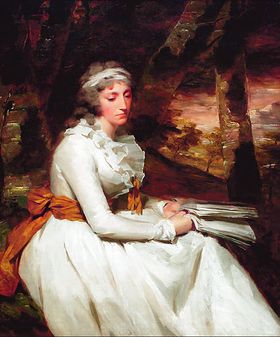Annotation:I'll Gang Nae Mair to Yon Town
X:1 T:I'll gae nae mair to your Town M:C| L:1/8 R:Reel B:Robert Bremener - A Collection of Scots Reels or Country Dances (London, 1757, p. 6) Z:AK/Fiddler's Companion K:F V:1 clef=treble name="1." [V:1] A|Ff-fc TA2 Fc|(A/B/c) Fc AGGg|(a/g/f/e/ f)c TA2 Fc|(A/B/c) Gc AF F:| |:(c|AF)cF dFcF|AFcF (d/c/B/A/) Gc|AFcF dFcF|(A/B/c) Gc AF F:|]
I'LL GANG/GAR NAE MAIR TO/TAE YON TOON/TOUN/TOWN. AKA - "I'll Go No More to Your Town," "We'll Gang Nae Mair to Yon Town," "Bha mi 'n de air Cheilidh" (I went visiting yesterday). AKA and see "Earl of Dalkeith's Reel (2)," "Ferry Point (The)," "Lucky in Love," "Oh Gang with Me to Yon Town," "Pope's Toe (The)," "Welcome to the Country (1)," "Welcome to the Town Again," "We'll gang nae mair to yon Town." Scottish, English; Reel. England, Northumberland. A Major (Donnellan, Kennedy, Raven): F Major (Athole, Bremner, Kerr, Lowe, Skye, Surenne, Williamson): G Major (Goodman, Jones, O'Farrell, Oswald). Standard tuning (fiddle). AB (Surenne): AAB (Gow, Jones, Lowe): AABB (Athole, Bremner, Goodman, Gow, Kennedy, Raven, Williamson): AABB' (Kerr, Skye): AABBCCDDEEFF (Oswald). John Glen (1891) finds the earliest printing of this tune in Robert Bremner's 1757 collection (p. 6). The title appears in Henry Robson's list of popular Northumbrian song and dance tunes ("The Northern Minstrel's Budget"), which he published c. 1800. O'Neill (1922) remarks: "Popular since its first publication in Bremner's Collection of Scots Reels or Country Dances 1757, 'I'll gae nae mair to yon town' has been a fruitful source of variants which circulated under various titles. The variant herewith presented, was found without a name in Sergt. O'Neill's manuscripts."

O' wat ye wha's is yon toun,
Ye see the e'ening sun upon?
The fairest maid's in yon toun,
That e'ening sun is shining on.
She died of tuberculosis four years later, after the birth of two daughters, despite Oswald's efforts to contain the disease by taking her to Portugal where the climate was thought healthful.
“We’ll Gang nae Mare tae Yon Toon” was the regimental march of several British army units at one time, including the 2nd Battalion The Queen’s Royal Regiment, the 1st Battalion The Essex Regiment and the 2nd Battalion The Royal Hampshire Regiment. The Scottish tune was introduced into English regimental repertoire by the first commanding officer of the 2nd Queens when it was raised in 1858. The Colonel, a man named Bruce, had transferred in from a Highland regiment and took the melody with him (according to David Murry, Music of the Scottish Regiments, Edinburgh, 1994, p. 205). These regiments have since been consolidated and amalgamated several times into other units, and have long ceased to exist. Murray writes, in expanation of the title:
Soldiers were not popular in Victorian England—except, sentimentally, when engaged in fighting far away—and the title of the march might well have found an echo in the hearts of the soldiers as they marched out of an unpopular station where, perhaps, the people were unfriendly, the girls unapproachable, and the publicans hostile.
A pipe reel entitled "Cha tèid mi fein a Chèilidh" (I won't go a gossiping) from William Gunn's Caledonian Repository of Music Adapted for the Bagpipe (Glasgow, 1848, p. 17) is a version of "I'll gagn nae mair to yon town." Another version of the tune was entered into the large 1840 music manuscript collection of multi-instrumentalist John Rook (Waverton, Cumbria). County Cork cleric and uilleann piper Canon James Goodman had a reel version of the first two parts of "I'll gang nae mair..." in his mid-19th century music manuscript (vol. iii, p. 167) under the title “Earl of Dalkeith's Reel (2),” but he also had versions under the 'gang nae mair' title (vol. 2, p. 159[1] and vol. 3, p. 153). The tune was entered twice in the music manuscript collection in the possession of Rev. Luke Donnellan[1] (1878-1950) in the keys of 'G' and 'A'. Donnellan's version is quite similar to that in the James O'Neill manuscripts. See also the Irish variant "Lucky in Love," recorded in New York by County Leitrim flute play John McKenna in the 78RPM era.
- ↑ Donnellan researcher Gerry O'Connor came to believe the ms. is not the work of the curate but rather was originally compiled by a unknown but able fiddler over the course of a playing lifetime, probably in the late 19th century. The ms. later came into the possession of Donnellan, who was also a fiddler.


